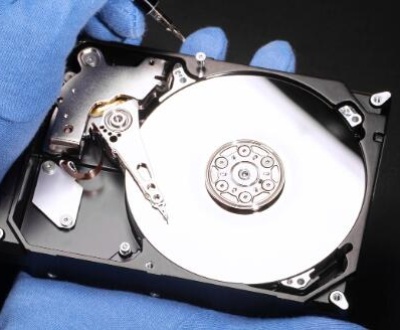Windows 11 offers a sleek and user-friendly interface, but users can still encounter frustrating issues like files disappearing from the desktop. This can occur for various reasons, ranging from simple visibility settings to more complex system errors or accidental deletions. Understanding why files disappear and how to recover them is crucial for maintaining productivity and ensuring data safety.
Common Causes of Missing Desktop Files
Accidental Deletion
One of the most common reasons files disappear is accidental deletion. Users might unintentionally delete files using keyboard shortcuts or by right-clicking and selecting “Delete.”
File System Glitches
Temporary glitches in the operating system or file system can cause files to not display correctly.

Hidden Files
Files can become hidden due to changes in system settings or file attributes.
Corrupted User Profile
If your user profile becomes corrupted, it can lead to missing files on the desktop.
Virus or Malware
Malicious software can hide or delete files from your system.
Windows Updates
Occasionally, updates can cause display issues or file access problems.
Syncing Issues
If you’re using OneDrive or another cloud service, syncing issues can lead to files not appearing.
Immediate Steps to Take When Files Disappear
1. Check the Recycle Bin
Before panicking, check the Recycle Bin. Files deleted from the desktop often go here.
How to Access:
Double-click the Recycle Bin icon on your desktop.
Look for your missing files. If found, right-click the file and select “Restore.”
2. Use the Search Function
If your files are not in the Recycle Bin, use the Windows search function.
How to Search:
Click on the search icon (magnifying glass) on the taskbar.
Type the name of the file or keywords associated with it.
Check the results to see if the file appears.
3. Check for Hidden Files
Sometimes files can be hidden from view.
How to Show Hidden Files:
Open File Explorer.
Click on the “View” menu at the top.
Select “Show” and then click “Hidden items.” Check your desktop again.
4. Restart Your Computer
A simple restart can resolve many minor glitches that cause files to disappear.
Advanced Recovery Methods
If the above steps do not yield results, consider the following advanced recovery methods.
1. Restore Previous Versions
Windows often saves previous versions of files, which can be restored.
How to Restore:
Right-click on your desktop (or the folder where the files were).
Select “Properties.”
Go to the “Previous Versions” tab.
If available, select a version before the files went missing and click “Restore.”
2. Use File Recovery Software
If files were permanently deleted, recovery software can help.
Recommended Software:
Panda Assistant is a cutting-edge data recovery software designed to effortlessly recover lost or deleted files from various storage devices, including hard drives, SSDs, USB drives, and memory cards. Its intuitive interface makes it accessible for both novice and experienced users, allowing them to navigate the recovery process with ease. Panda Assistant employs advanced algorithms to delve into your storage devices, scanning for recoverable data and providing a detailed preview of found files.
With features such as deep scanning, file filtering, and quick recovery options, users can quickly locate specific files, whether they’re photos, documents, or videos. The software supports various file formats, ensuring broad compatibility for diverse recovery needs. Additionally, Panda Assistant offers a secure recovery process, safeguarding your data integrity while retrieving lost information.
3. Check OneDrive Sync Settings
If you use OneDrive, files may have been moved or unsynced.
How to Check:
Click on the OneDrive icon in the taskbar.
Check the sync status and ensure your files are not unsynced.
Navigate to your OneDrive folder in File Explorer to see if the files are there.
Preventive Measures
To minimize the risk of files disappearing in the future, consider the following strategies.
1. Regular Backups
Regularly back up important files using:
Windows Backup: Use the built-in Windows Backup feature.
Cloud Services: Utilize services like OneDrive, Google Drive, or Dropbox.
2. System Restore Points
Enable System Restore to create restore points before major changes.
How to Enable:
Search for “Create a restore point” in the start menu.
Click on “Configure” under your system drive.
Ensure “Turn on system protection” is selected.
3. Use Antivirus Software
Keep your system protected from malware with reliable antivirus software. Regular scans can catch potential threats that could affect your files.
Finding files that have disappeared from your Windows 11 desktop can be frustrating, but understanding the causes and knowing the right recovery steps can alleviate much of that stress. Always start with basic troubleshooting methods, and if those fail, consider more advanced recovery options. Preventive measures like regular backups and antivirus protection can safeguard your data against future losses.
About us and this blog
Panda Assistant is built on the latest data recovery algorithms, ensuring that no file is too damaged, too lost, or too corrupted to be recovered.
Request a free quote
We believe that data recovery shouldn’t be a daunting task. That’s why we’ve designed Panda Assistant to be as easy to use as it is powerful. With a few clicks, you can initiate a scan, preview recoverable files, and restore your data all within a matter of minutes.
Subscribe to our newsletter!
More from our blog
See all postsRecent Posts
- Data recovery salt lake city utah 2025-04-18
- Data recovery sacramento 2025-04-18
- Data recovery miami 2025-04-18

 Try lt Free
Try lt Free Recovery success rate of up to
Recovery success rate of up to









